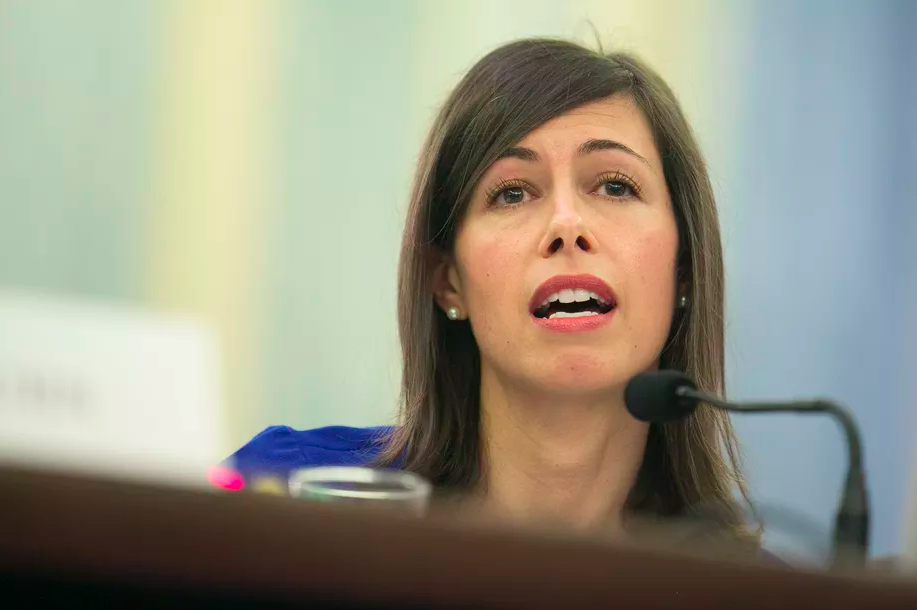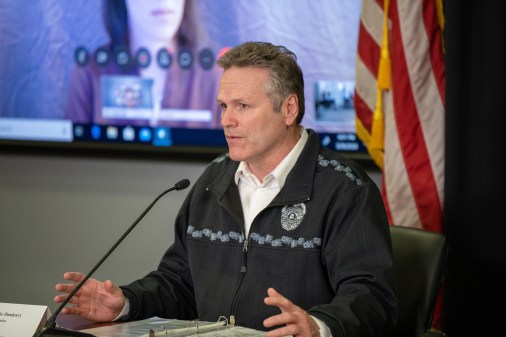Rosenworcel proposes ‘homework gap fund’ to address digital disparity in K-12 districts

In front of an audience of state education leaders and private sector vendors on Monday, Federal Communications Commissioner Jessica Rosenworcel shared ideas to increase digital equity — expanding the federal government’s E-rate subsidy program and establishing a billion-dollar national fund dedicated to closing the “homework gap,” or the the educational divide between K-12 students who have internet access at home and those who don’t.
“The more attention we can bring to the power of E-rate and the importance of closing the homework gap, the better,” Rosenworcel said.
Since her first nomination in 2012 under President Barack Obama and her renomination in 2017 under President Donald Trump, Rosenworcel has led the commission’s efforts to modernize the federal E-rate 2.0 program, including an effort to update schools from dial-up internet to high-speed broadband connections. At the State Education Technology Directors Association, or SETDA, conference in Arlington, Virginia, she said she wants to continue to expand E-rate.
The program subsidizes connectivity for K-12 districts nationwide, including broadband, Wi-Fi and other services that are proving critical to digital-friendly curriculums that are only possible for many schools because of the E-rate discount.
Rosenworcel touted both the program’s successes and impediments, noting the 40 million students and 2.5 million teachers in schools with adequate broadband, and recent trips to North Carolina and New Mexico where she was able to see first-hand how connectivity empowered by E-rate was improving education.
The data wasn’t all positive, though — just 28 percent of school districts are meeting the connectivity threshold set by SETDA of one gigabit per 1,000 students. Rosenworcel said her main cause for concern is her fellow commissioners, who are expected to soon author and publish a report on E-rate that that she said could stunt or even erase the program’s recent progress.
“I’m going to be very blunt and clear just why,”Rosenworcel said. “When I look around at the FCC, I realize my remaining colleagues did not support that E-rate 2.0 effort [that started in 2013].”
Rosenworcel said she’s concerned that the report will include recommendations that decrease funding and roll back the reforms realized over the last five years during the program’s transition to high-speed broadband.
“We do not want to erase the gains that were made, reduce the reach of this program, cut off classrooms or multiply administrative changes. We’ve come too far now,” she said.
Both the FCC and independent research agencies, like the Pew Research Center, have concluded that the homework gap is growing. A 2008 study cited by Grunwald Associates LLC found that seven in 10 teachers assign homework that requires internet access. Pew data shows one in five teenagers cannot complete homework that requires internet at home.
Where those numbers overlap, Rosenworcel said, is the homework gap. She said she wants to create a national fund that addresses the issue on a state-by-state basis.
Rosenworcel explained that the model for this program would be based on repurposing an underused program from the 1960s in which the federal government sold 2.5 GHz spectrum to schools in an attempt to create an education television broadcast. If school districts can be encouraged to sell those airwaves back to the FCC, it can auction them off to telecom providers that can then use that spectrum to support their 5G networks, she said. The funds raised by the FCC would be used for Rosenworcel’s digital equity fund.
“In other words, we could use the revenues from those airways to set up a fund to help address digital equity in every state in this country,” Rosenworcel said. We could do that in all sorts of cool ways and we would need the expertise of people in this room to help us identify what works.”
Other small-scale programs, like Wi-Fi on wheels, mobile hotspots and extended library services have proved successful when used, Rosenworcel added. The national homework gap fund, while a large undertaking, has a precedent — the FCC did a similar thing in re-purposing funds to support public safety last year.




